Top 5 Interesting Facts about Seahorses
Seahorses are a favorite of the marine animal kingdom. Adults and kids alike adore these underwater equines, but although we know they’re not horses, are they ... read more...really fish? Find out the answer to this and more with these interesting facts about seahorses!
-
In fact, they eat almost constantly. Since they have no teeth or stomachs, food passes through their small bodies very quickly, so they have to eat at least 30 meals per day. Their digestive systems work so quickly that food moves too rapidly through their bodies to absorb much nutrition.
In a way that extends the hunting strategy, their snouts create an effective eating instrument. One seahorse can consume 3,000 brine shrimp every day. They enjoy eating plankton as well.
The seahorse eats primarily small shrimp and other crustaceans, consuming them through lips that function like trapdoors. The seahorse moves into position when it spots potential prey, then snaps! Rapid opening and closing of the trapdoor creates a little eddy that draws the prey directly into the seahorse's mouth.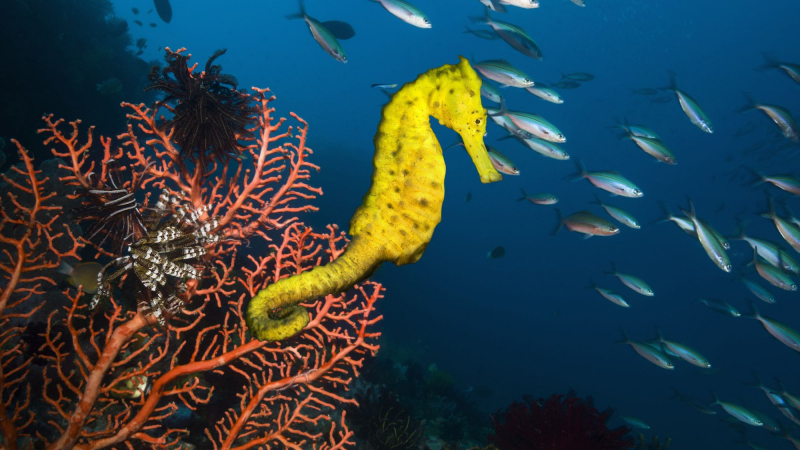
Photo: https://www.cabrillomarineaquarium.org/exhibits/marine-life.asp?id=200 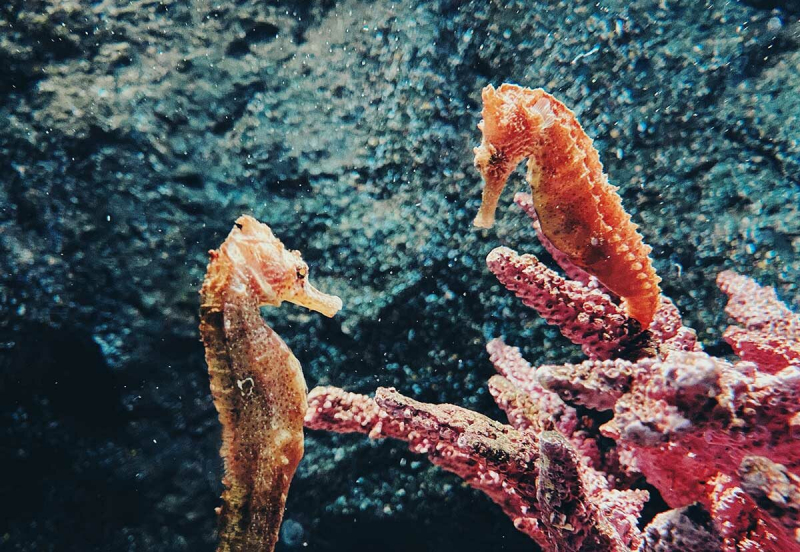
Photo: https://nautil.us/how-surprising-connections-can-save-the-ocean-9722/ -
One of the more well-known seahorse facts is this one. Seahorses swim together, interweave their tails, change colors, and use the same anchor point during their courtship rituals. When they mate, the male carries the female's eggs until they hatch in a pouch on his belly.
The male will repeatedly clench his abdomen when it's ready to give birth, spitting out small, fully developed seahorses. A few weeks, or maybe even months, pass throughout the gestation period. Seahorse labor is a long and exhausting process, with some species' contractions lasting up to 12 hours. The pouch of a male seahorse can hold up to 2,000 fries.The old wives' story that men were the ones giving birth gave rise to the stereotype of men as the givers of children. Usually, a male seahorse needs to relax during pregnancy. The male is free to start laying yet another batch of eggs while the female is occupied caring for the fry, speeding up mating and enabling higher rates of reproduction. The moment the current batch of fry emerges from the male's pouch, he is prepared to host another clutch.
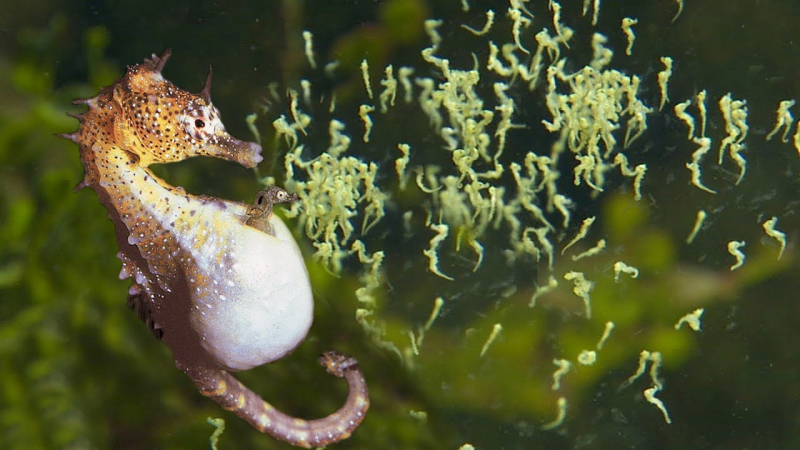
Photo: https://www.pinterest.com/pin/568298046728044217/ 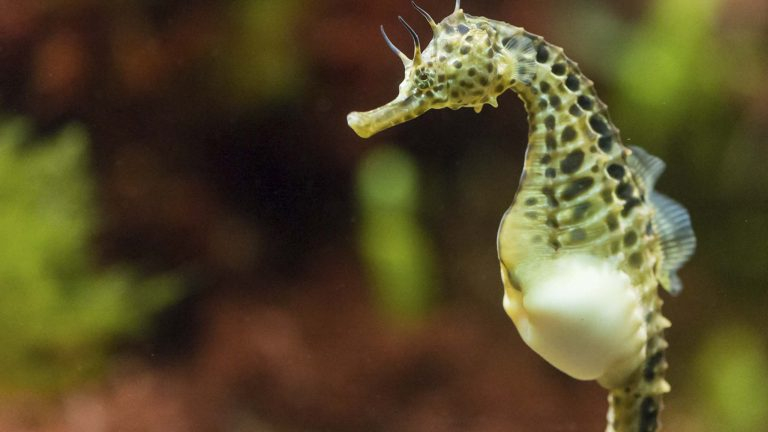
Photo: https://insh.world/science/pregnant-poppas-underknown-sex-life-male-seahorse/ -
In addition to having a different exterior look from other fish, seahorses are also incredibly bad swimmers. Because they can only move forward using a minuscule fin in the middle of their backs, they move the slowest of any fish species. Although this one tiny fin may beat back and forth up to 50 times per second, its small size prevents it from covering much ground.
Seahorses are regrettably known to be so sensitive that they can become fatally tired when waters grow turbulent during storms, despite having little pectoral fins that aid in steering. Seahorses are particularly unusual in that they can travel not just forward but also up, down, and backward, despite the fact that they aren't very resilient.
They can move through the water almost silently due to the shape of their heads, and when you add that to the fact that they can blend in with their surroundings thanks to the helpful chromatophores found in their skin cells, it is obvious that seahorses make excellent hunters, as evidenced by a predatory kill rate of about 90%. Hey, if you're going to struggle with swimming, you might as well make up for it by being incredibly cunning and effective!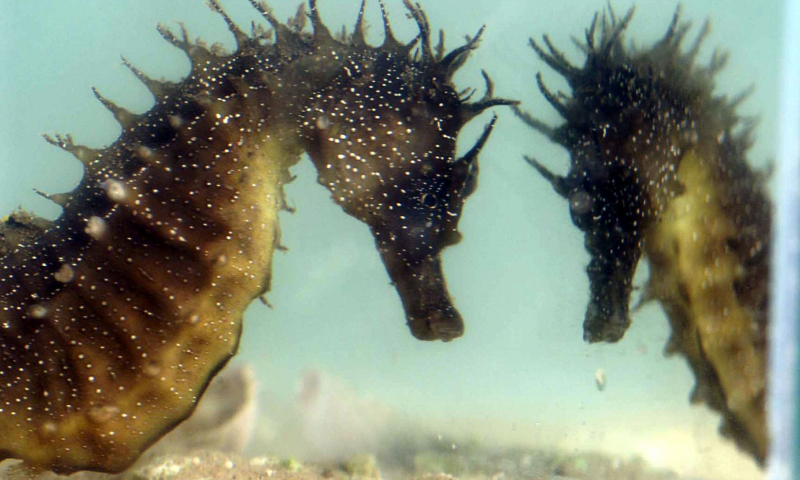
Photo: https://www.dailymail.co.uk/sciencetech/article-3404126/Seahorses-Britain-risk-dying-habitat-destroyed-pollution-trawling.html 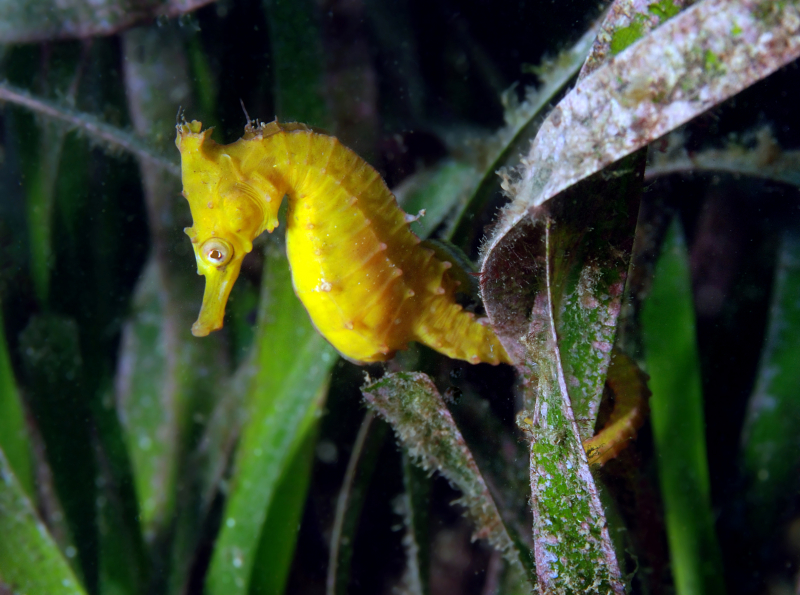
Photo: https://www.dpi.nsw.gov.au/fishing/threatened-species/what-current/endangered-species2/whites-seahorse -
Every morning, seahorse couples engage in ritualistic dances to greet each other, moving through intricate, rhythmic sequences of twists and twirls for minutes to hours on end. They change color as they move together, sometimes with their tails entwined. That tail is prehensile, anchoring them to things like blades of sea grass compared to a baby grasping an adult’s finger.
Seahorses show that humans are not the only species that "dates," despite the fact that people may organize dates with romantic prospects to assess compatibility and get to know each other better. They dance every day to bolster their romantic relationship and make sure their reproductive cycles are properly synchronized. Couples with the seahorse pattern frequently stay with the same partner for a very long time. The possibility of effective, ongoing reproduction throughout time is increased when seahorses commit to a single spouse and go through numerous reproductive cycles during each mating season.
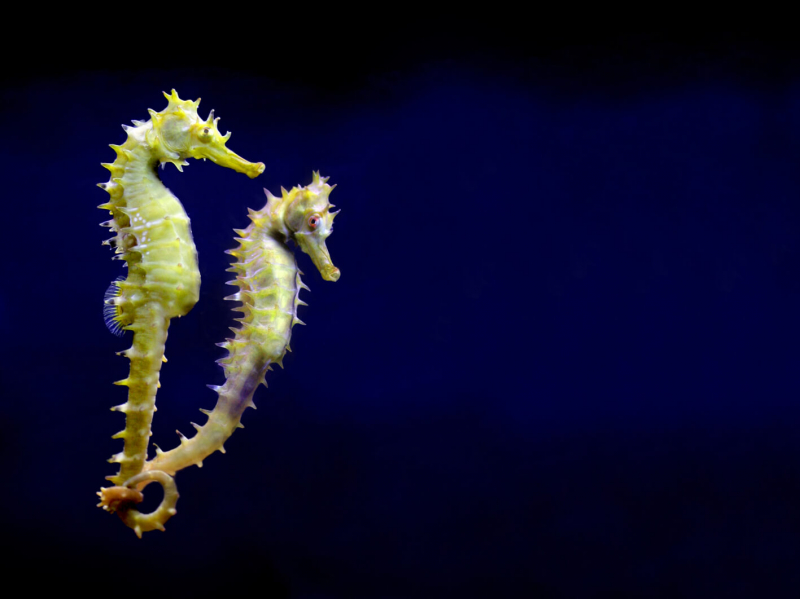
Photo: https://catherinetingey.com/together-but-separate/two-seahorses-with-tails-intertwined/ 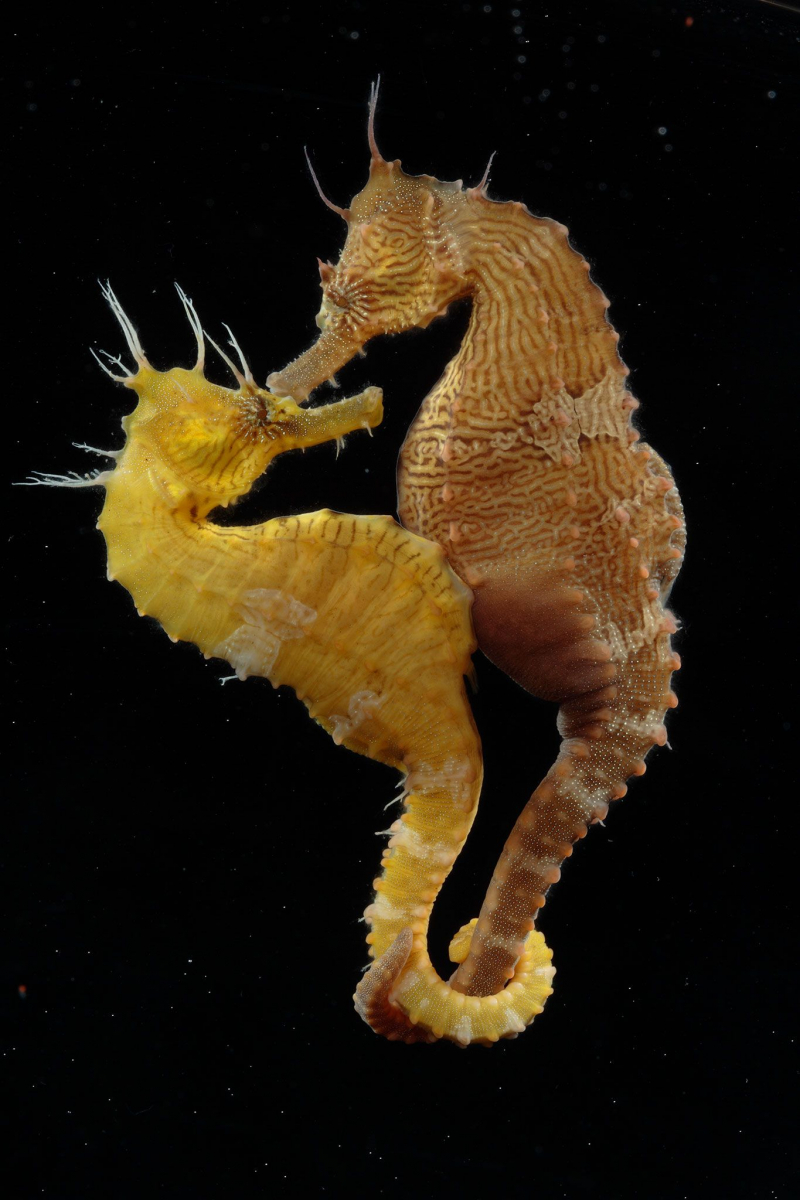
Photo: https://www.girlsaskguys.com/other/q3187836-what-would-the-world-be-like-if-girls-had-penis-boys-had-vagina -
Ancient Greeks, Asians, and even some European cultures all consider the seahorse to be a mythical creature. On the other side, the seahorse represents luck to sailors. More importantly, the seahorse's symbolic meaning can assist you in finding equilibrium in your life and refining your manly energy so that you can use it to raise your kids.
Additionally, seahorses are a representation of patience and calm due to the way they move. Seahorses aren't the best swimmers either since they like to go with the flow rather than against it. However, they frequently surround and encircle an object with their tails in order to remain stationary, displaying tenacity.
The seahorse has been around for a very long time, and various cultures have assigned various meanings to it. The seahorse was an important Water symbol for the Ancient Greeks. It had a close relationship with Poseidon, a deity of the sea, earthquakes, and storms. Because this animal was regarded as one of the most significant Water emblems, it served as a significant representation of this god. The seahorse was a symbol of enormous power and strength for the Greeks. They referred to it as the "hippocampus," or hippocampus as we currently understand it. This is translated as "horse," however "sea monster" might be a more accurate and precise translation.The seahorse was associated with the Romans' deity of the sea, Neptune, just like it was with the Greeks. However, it's interesting to note that Romans assigned a different metaphorical significance to this animal than do sailors today. They believed that seahorses should lead seafarers to drown rather than show them the way. This may have had a slightly negative connotation in terms of the symbolism of seahorses for the Romans, but it no longer holds true.
The seahorse motif also has a lengthy history in Chinese culture. This animal is frequently employed in traditional Chinese medicine because it was believed to have therapeutic effects by the Chinese. As a result, the seahorse is in danger on the Chinese seas. But for them, this species is consumed or frequently added to other medications and home-brewed beverages. When it comes to impotence, wheezing, discomfort, and labor induction, it is believed to treat some or most health issues. Thus, this animal also represented power, health, and vigor to the Chinese.
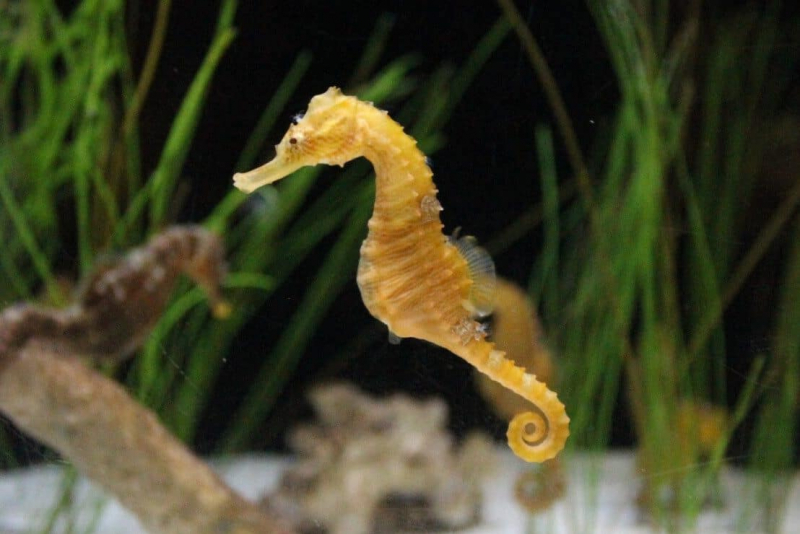
Photo: https://symbolismandmetaphor.com/seahorse-spirit-animal-symbolism/ 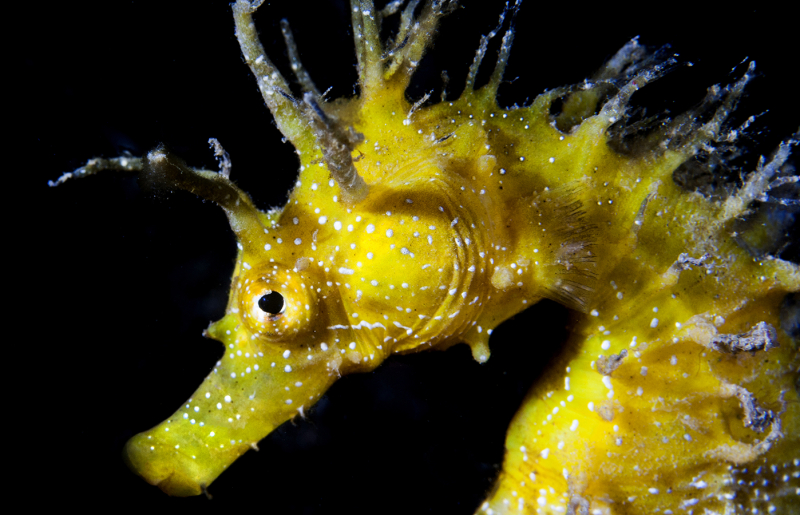
Photo: https://animals.howstuffworks.com/marine-life/seahorses.htm


























